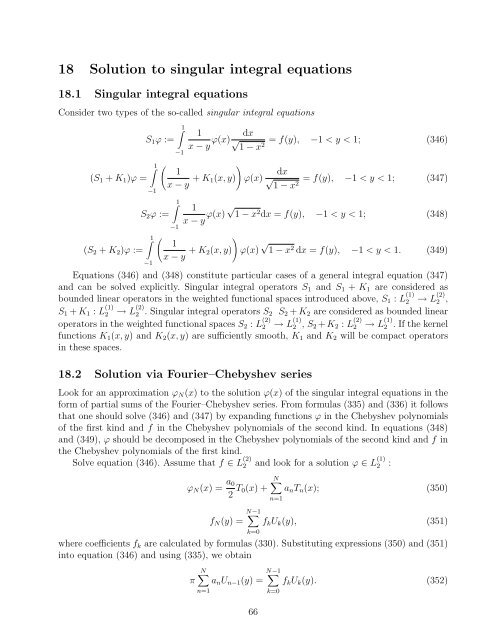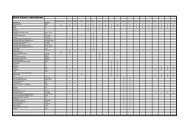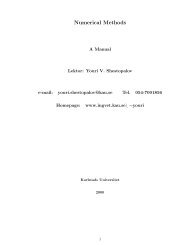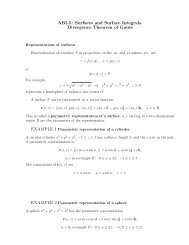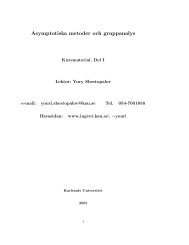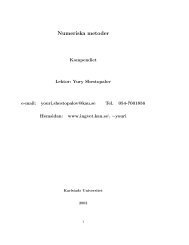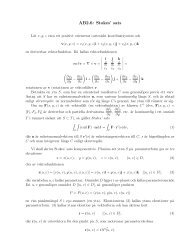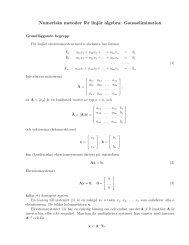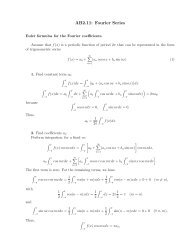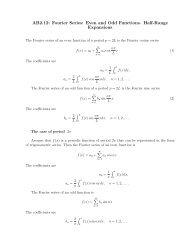You also want an ePaper? Increase the reach of your titles
YUMPU automatically turns print PDFs into web optimized ePapers that Google loves.
18 Solution to singular integral equations18.1 Singular integral equationsConsider two types of the so-called singular integral equations(S 1 + K 1 )ϕ =(S 2 + K 2 )ϕ :=S 1 ϕ :=∫ 1−1S 2 ϕ :=∫1−1∫ 1−11x − y ϕ(x) dx√ = f(y), −1 < y < 1; (346)1 − x2( )1x − y + K dx1(x, y) ϕ(x) √1 − x2∫1−1= f(y), −1 < y < 1; (347)1x − y ϕ(x) √ 1 − x 2 dx = f(y), −1 < y < 1; (348)( )1x − y + K 2(x, y) ϕ(x) √ 1 − x 2 dx = f(y), −1 < y < 1. (349)<strong>Equations</strong> (346) and (348) constitute particular cases of a general integral equation (347)and can be solved explicitly. Singular integral operators S 1 and S 1 + K 1 are considered asbounded linear operators in the weighted functional spaces introduced above, S 1 : L (1)2 → L (2)2 ,S 1 + K 1 : L (1)2 → L (2)2 . Singular integral operators S 2 S 2 + K 2 are considered as bounded linearoperators in the weighted functional spaces S 2 : L (2)2 → L (1)2 , S 2 + K 2 : L (2)2 → L (1)2 . If the kernelfunctions K 1 (x, y) and K 2 (x, y) are sufficiently smooth, K 1 and K 2 will be compact operatorsin these spaces.18.2 Solution via Fourier–Chebyshev seriesLook for an approximation ϕ N (x) to the solution ϕ(x) of the singular integral equations in theform of partial sums of the Fourier–Chebyshev series. From formulas (335) and (336) it followsthat one should solve (346) and (347) by expanding functions ϕ in the Chebyshev polynomialsof the first kind and f in the Chebyshev polynomials of the second kind. In equations (348)and (349), ϕ should be decomposed in the Chebyshev polynomials of the second kind and f inthe Chebyshev polynomials of the first kind.Solve equation (346). Assume that f ∈ L (2)2 and look for a solution ϕ ∈ L (1)2 :ϕ N (x) = a 02 T 0(x) +f N (y) =N−1 ∑k=0N∑a n T n (x); (350)n=1f k U k (y), (351)where coefficients f k are calculated by formulas (330). Substituting expressions (350) and (351)into equation (346) and using (335), we obtainN∑N−1 ∑π a n U n−1 (y) =n=1k=066f k U k (y). (352)


